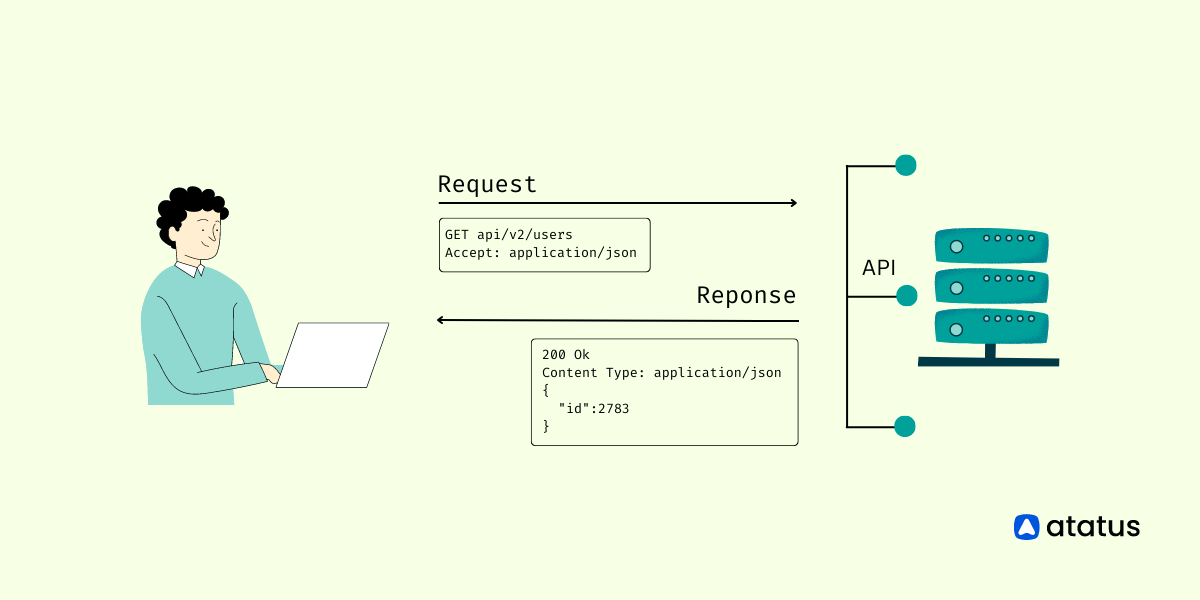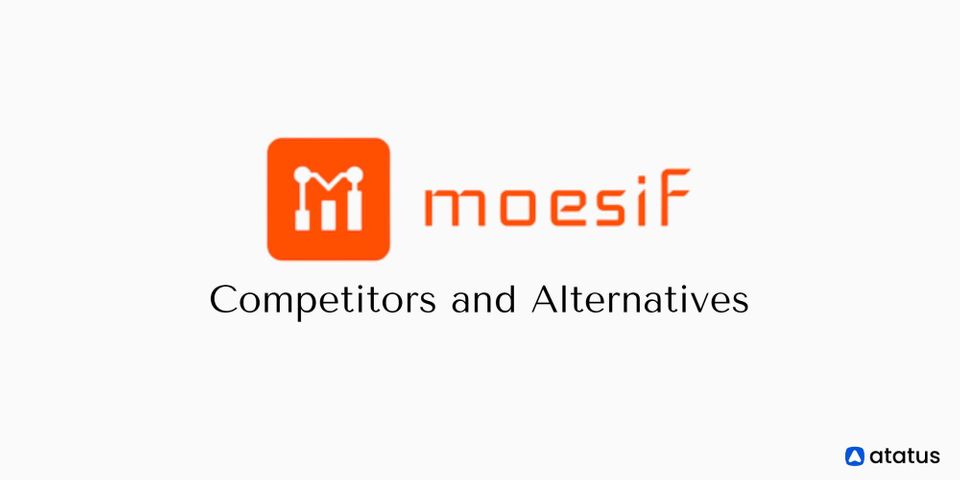9 Best Email API Services for Developers
Using email to communicate with consumers, sell new items, connect with future customers, and much more is crucial for running a successful business.
Despite the numerous communication options available today, such as social media platforms, chatbots, and collaboration tools like Slack, email remains a viable and effective option. In fact, Internet Live Stats reports that 2,641,007 emails are received per second.
When discussing business email, two primary use cases are transactional emails and marketing emails. Transactional emails are automatic alerts sent in response to user activities, containing information the receiver needs or desires. Examples of transactional emails include account creation notifications and purchase receipts.
Marketing emails, on the other hand, aim to attract, convert, and retain consumers. These emails encompass newsletters, sales promotions, and advertisements. In this blog, we will delve into Email APIs, exploring their types, identifying the features that make an email API the best, and providing examples of the top email APIs.
- Email API - An Introdcution
- Email API vs SMTP
- Advantages of using Email APIs
- Disadvantages of using Email APIs
- Types of Email APIs
- Top 9 Email APIs
Email API - An Introdcution
Email service providers (ESPs), such as Gmail, Microsoft Outlook, Yahoo! Mail, and others, offer developers access to information and features through an email API, or application programming interface.
By integrating with email APIs, developers can quickly create apps that enable end users to produce and send messages, modify templates, move or update folders, create drafts, and perform various email activities seamlessly without navigating between different platforms.
Email API providers handle protocol-related tasks, such as message assembling, sending, and reporting, which would otherwise require definition by a company's application software development team.
Moreover, email APIs facilitate the execution of robust data analyses that may not be achievable by interfacing directly with the ESP.
Email API vs SMTP
Application programming interfaces (APIs) like SMTP APIs and web APIs enable communication between various software systems.
You can send automated messages, receive and process emails, and maintain email lists using SMTP APIs, which let you interface programmatically with email hosting providers and services.
Web APIs allow various programs, services, and systems to communicate with one another. They are able to carry out tasks, obtain data, and communicate with other devices in a variety of ways. These APIs are frequently used to create integrations between various software systems or to provide information or functionality to developers. They are commonly built using HTTP and JSON.
An SMTP server is used to transport emails that are sent from a single email account to another using the SMTP (Simple Mail Transport Protocol) email communication protocol.
While SMTP and email APIs both have similar essential functions, SMTP necessitates far more server communication. For they can be sent, the emails must first go through authentication and verification. This not only delays email transmission but also raises the possibility of failed delivery.
However, automated message sending and follow-up activities (depending on client reaction) are possible using email API. It is now easier to manage transactional emails as a result. In other words, SMTP services are ideal for massive email marketing campaigns, whereas email APIs are suited for delivering bulk transactional emails.
Advantages of using Email APIs
Using mail APIs offers three advantages:
- Email transfer that's quicker: When using an API, there is less back-and-forth communication between servers, which speeds up delivery.
- Analytics: In contrast to SMTP, an email API often offers statistical data on interactions between recipients and emails, such as deliverability of emails, open rate, unsubscribes, and others
- Safety: You need an API key when sending emails through the email API. This safeguards the website or app from spammers and phishers.
- Integration Flexibility: Mail APIs offer the flexibility to integrate email functionality into diverse applications and systems, fostering seamless collaboration and communication across different platforms.
Disadvantages of using Email APIs
Here are two disadvantages associated with the utilization of an email API:
- Demands coding expertise: It's difficult to set up and maintain email APIs since it primarily relies on your proficiency with programming languages and client-side libraries. Even with thorough documentation, it might be difficult to comprehend and put into practice email sending.
- Requires Regular Updates: Unlike SMTP, API versions are updated annually. Therefore, you'll need to maintain a watch out for updates and adjust as necessary to comply with the new regulations.
Types of Email APIs
1. Transactional and Contextual Emails
Businesses that must send out a large number of emails quickly and with little customization can use transactional APIs. These APIs are most suitable for transactional notifications, promotional offers, and automatic marketing updates.
Companies that must send as well as receive mail in a conversational setting should use contextual APIs. Personalized interactions like sales outreach, customer support questions, or customized emails are made possible by these APIs.
Users may send emails from their own email addresses, add HTML and graphics to each message, and check interaction rates using analytics using conversational APIs, all while receiving excellent deliverability rates.
- Examples of Transactional Emails: Order confirmations, password reset emails, account notifications, and receipts.
- Examples of Contextual Emails: Personalized product recommendations, content based on user preferences, or tailored marketing messages based on user behavior.
- APIs: Transactional emails are typically sent using APIs such as SMTP, SendGrid API, Mailgun API, or Amazon SES API.
2. Sending and Receiving Emails
You can schedule email messages and customize them to meet the needs of your company by using sending APIs. Sending capabilities are supported by transactional and contextual APIs alike.
Organizations can receive emails from clients or various third parties thanks to receiving APIs. Without having to handle each email individually, you may link your current email account with an outside provider to get more emails simultaneously.
While transactional APIs can allow receiving emails, contextual APIs give an even better end-user experience when sending and receiving emails as part of a discussion.
Sending Emails API: This includes APIs like SMTP (for sending), SendGrid API, Mailgun API, Amazon SES API, and others.
Receiving Emails API: This can involve protocols like IMAP and POP3 for receiving emails, or specific APIs provided by email service providers for accessing inboxes, managing folders, or retrieving email content.
Top 9 Email APIs
1. Nylas
Nylas is the finest mail API in 2023 as it makes it quick and simple to establish a connection to your users' inboxes and set up useful email features. With the Nylas platform, organizations can build robust electronic mail, calendar, and contacts capabilities while saving thousands of development hours, allowing them to concentrate on their clients rather than their infrastructure.
Furthermore, the Nylas Email API offers businesses an industry-leading 99.9% deliverability rate, guaranteeing that your users' messages reach their intended recipients and are not SPAM. Nylas is renowned for other things as well, like its incredibly safe, scalable architecture and quick customer service team.
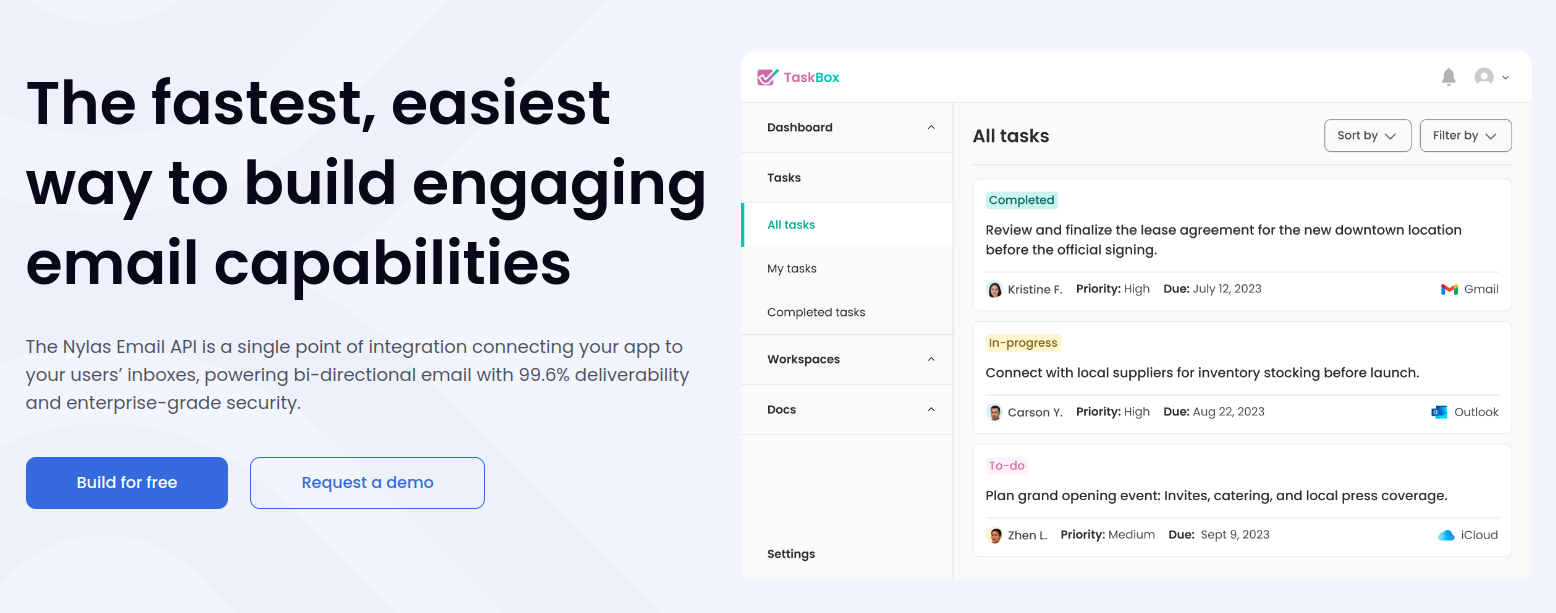
Features
- Connects to all email service providers universally
- Full Create, Read, Update, and Delete (CRUD) capabilities with stand-up bi-directional synchronization
- You may quickly and affordably perform a Google Cloud Application Security Assessment by using Nylas Express Security Review.
- Massive unstructured email data at your fingertips Message monitoring and analytics
- A team committed to client success that is responsive
2. SMTP.com
IT specialists and developers may incorporate mail into their online applications using SMTP.com's transactional API service. Businesses may customize their emails to the preferences of the recipients, taking into account things like device kind, geographic area, etc. Users may also utilize analytics to follow their marketing emails in real time.
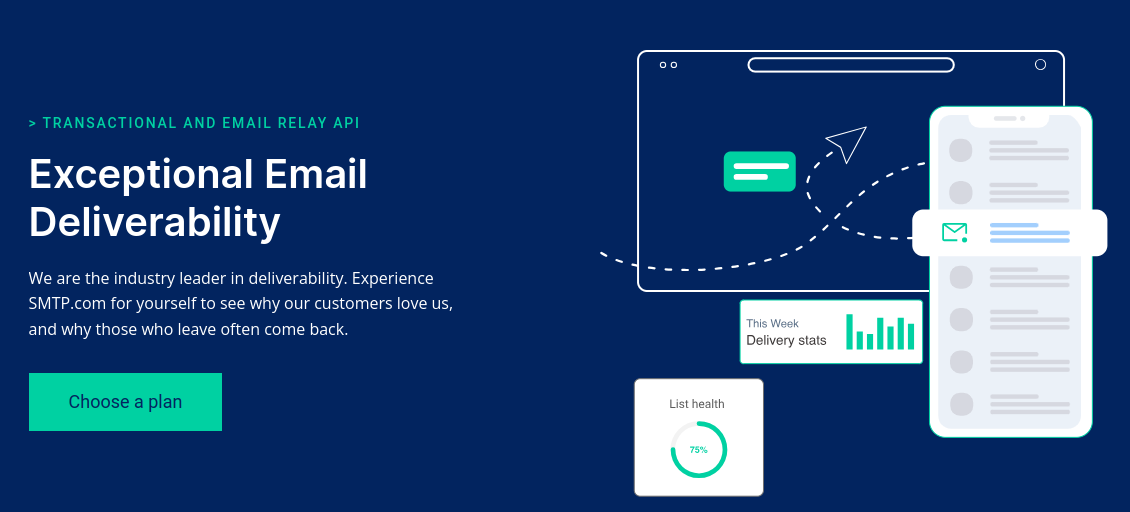
Features
- IP addresses on white lists
- Email security measures Monitoring tools
- Feedback loops in ISPs
- Collective IP addresses
3. Sendgrid
Businesses may reach a bigger audience by using Sendgrid's transactional email API, which customers can use to manage their emails. Users may track and evaluate email campaigns using Sendgrid's statistics. Additionally, the platform provides tracking options including open rates, click-through rates, and others.

Features
- Segmentation of emails
- Send mail API
- Reporting and monitoring
- Scalability of the enterprise and domain reputation
4. Amazon Simple Email Service
A commercial email service provider called Amazon Simple Email Service (SES) may be integrated with email-sending software. Deliverability costs, rates of opening, click-through rates, and other metrics are all available through Amazon SES analytics. Security tools are provided by Amazon SES to protect users from hackers and phishing frauds.
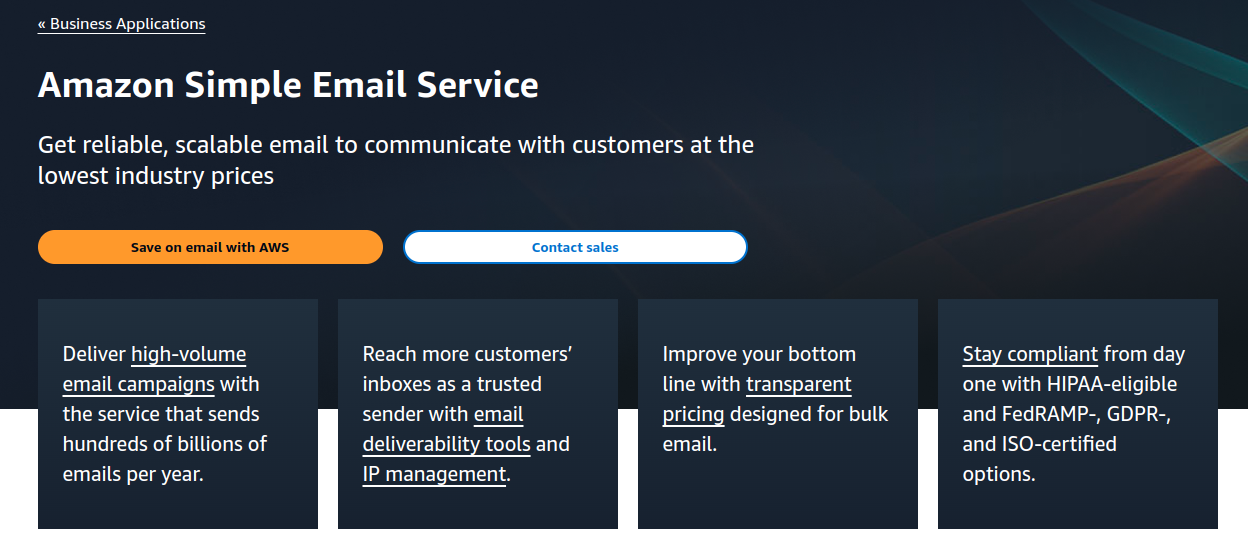
Features
- Options for sending configuration
- Deliverability to inbox
- Options for deployment
- Simulated inbox for emails
5. Mailgun
Users may send and track emails for transactions using Mailgun, a cloud-based email service. With the help of the platform, companies may tailor emails to the preferences of the receiver, including languages or device types.
The analytics dashboard of Mailgun gives data on email performance, such as open rates and click-through rates. Users may also generate HTML emails using Mailgun's drag-and-drop editor.
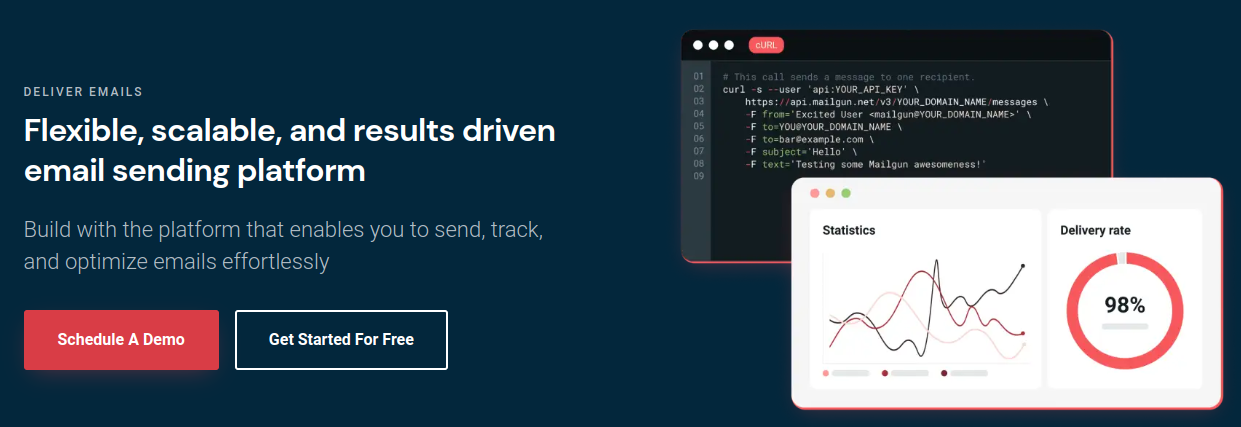
Features
- Email analytics and tracking
- Routing of incoming emails Testing of spam filters
- Send-time improvement
- Suppression Control
6. Mailchimp
Users of the web-based automation service Mailchimp may measure client engagements and publish newsletters on social media. Transactional emails, a marketing API, plus an API-first commerce platform are all provided by Mailchimp. Audiences can be managed, data can be integrated, and email campaigns can be sent on time.

Features
- Automatic Planning
- Email Monitoring
- Tools for Collaboration
- Using social media
- Click Monitoring
7. Mailmodo
An API called Mailmodo assists businesses in creating, testing, and distributing emails across many platforms and web browsers. It offers a platform for producing expert marketing emails from scratch or using pre-made templates.
A drag-and-drop email editor, email analytics, transactional campaign sending, email automation, drip emails with client journeys, valuable CRM connections, connections, marketing tools, and more are all included in Mailmodo's no-code ESP solution.
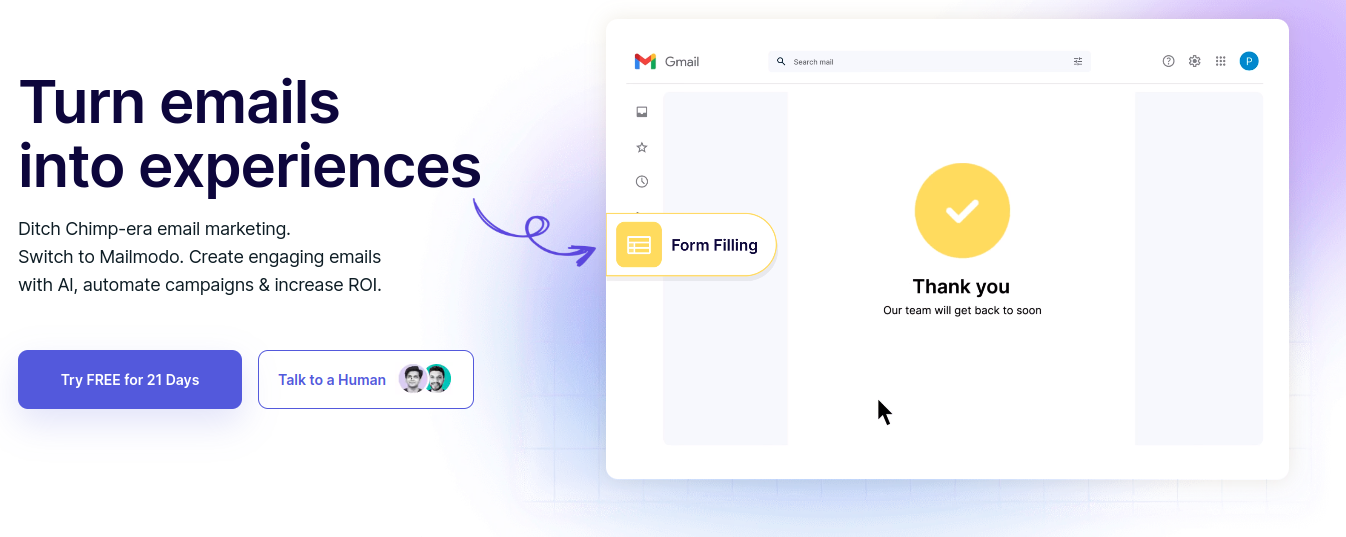
Features
- Analysis and Reporting for List Management
- Delivery performance and open rates
- Unencrypted emails
- Audience division
8. Sparkpost (Now MessageBird)
A real-time prediction and monitoring of ISP replies, email bounces, and spam traps are made possible by the email distribution platform Sparkpost. Utilizing email subject line prediction, blacklist monitoring, and brand imitation prevention techniques, marketers may design and send emails utilizing the inbox tracker.
Users may also set up SSL encryption and two-factor authentication to offer a secure user interface. Additionally, SparkPost has an API that enables organizations to link the platform with other outside products.
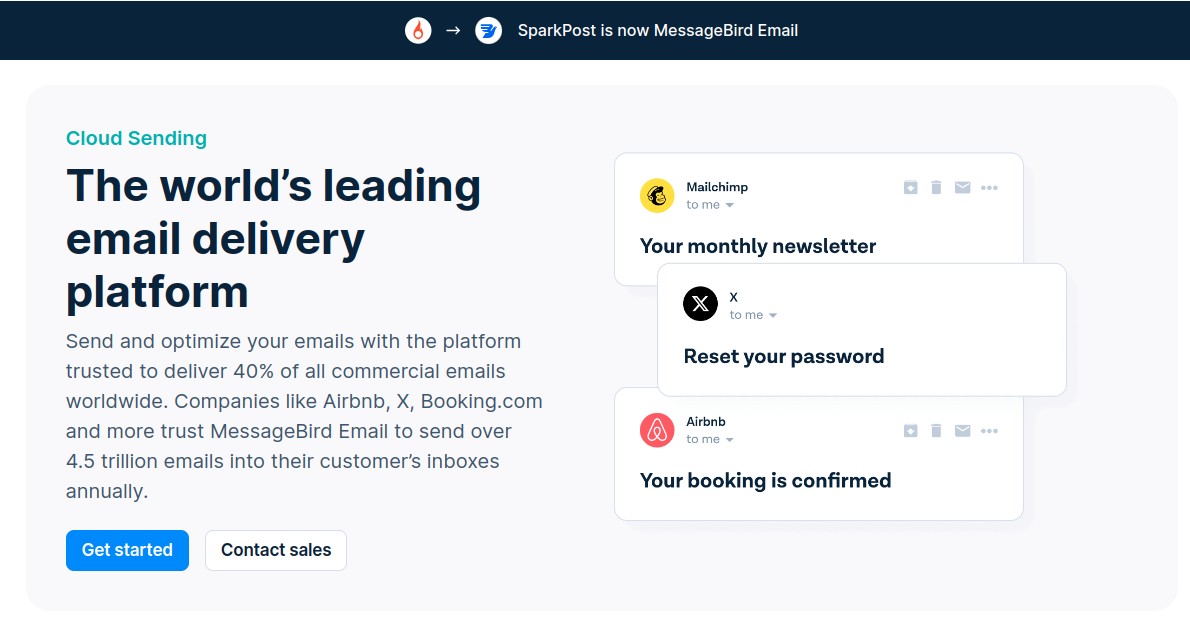
Features
- Only one email confirmation
- Detection of spam
- Grammar check
- Real-time warnings
- Integration of webhooks
9. Postmark
A high-deliverability email solution called Postmark was created to let developers send transactional and marketing emails.
Additionally, Postmark offers users a number of API-based tools for tracking deliverability and avoiding bounces. The platform also offers designs for resetting passwords, welcome messages, receipts, invoices, user invites, and other things to businesses.
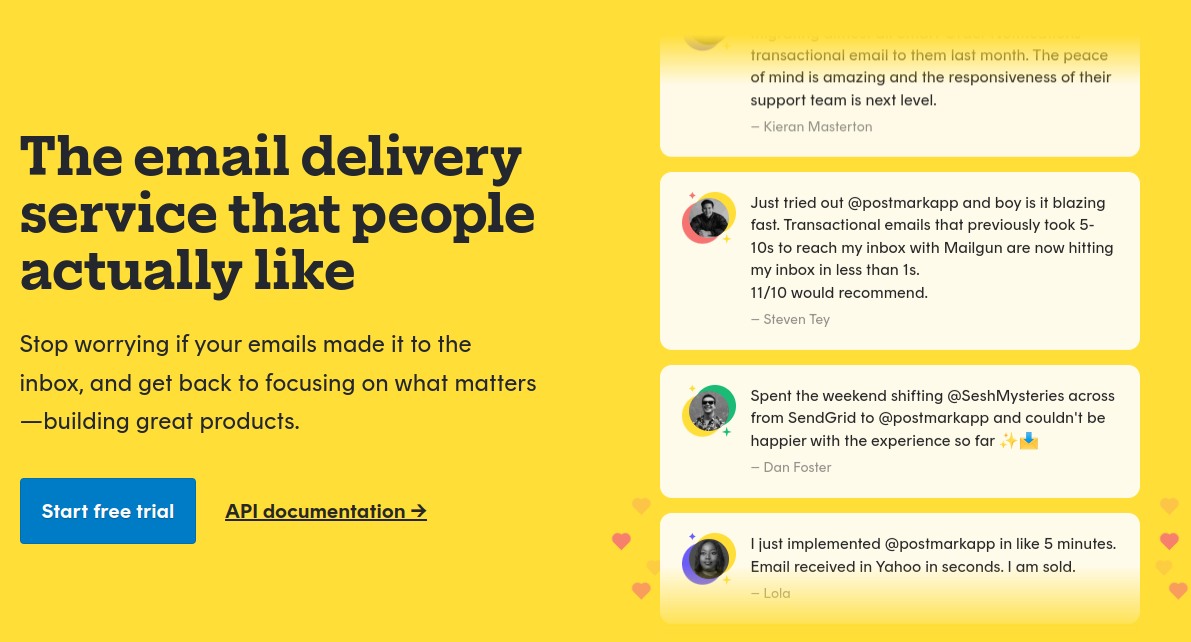
Features
- Spam Filter
- Email Surveillance
- Response Management
- Signature Management
- Data Recovery
Conclusion
There are various top-notch email APIs available that may aid companies and organizations in enhancing their email marketing and communications strategies.
Nylas is a top option for companies and developers wishing to set up engaging, integrated email features in their apps because of its global connection, bi-directional sync, and unmatched dependability.
You must test out each Email API in order to determine which is ideal for your use case. Developers may test out any of these APIs for free to determine whether they function correctly in their projects.
Additionally, it's crucial to thoroughly examine each API's cost (each of these providers has a price calculator on their site). The majority of these APIs base their pricing on monthly email traffic; hence, the bigger the e-mail volume, the more expensive the API.
Your online application may rely heavily on transactional emails, thus it makes sense to use the finest email API available. The several companies on the market, however, all have quite comparable products.
SendGrid, Postmark, Amazon SES, SendInBlue, and SparkPost are five of the finest options in our opinion since they all provide good speed, deliverability, and usability. However, the ultimate pick will undoubtedly rely on your specific use case.
Atatus API Monitoring and Observability
Atatus provides Powerful API Observability to help you debug and prevent API issues. It monitors the consumer experience and is notified when abnormalities or issues arise. You can deeply understand who is using your APIs, how they are used, and the payloads they are sending.

Atatus's user-centric API observability tracks how your actual customers experience your APIs and applications. Customers may easily get metrics on their quota usage, SLAs, and more.
It monitors the functionality, availability, and performance data of your internal, external, and third-party APIs to see how your actual users interact with the API in your application. It also validates rest APIs and keeps track of metrics like latency, response time, and other performance indicators to ensure your application runs smoothly.
#1 Solution for Logs, Traces & Metrics
APM
Kubernetes
Logs
Synthetics
RUM
Serverless
Security
More



